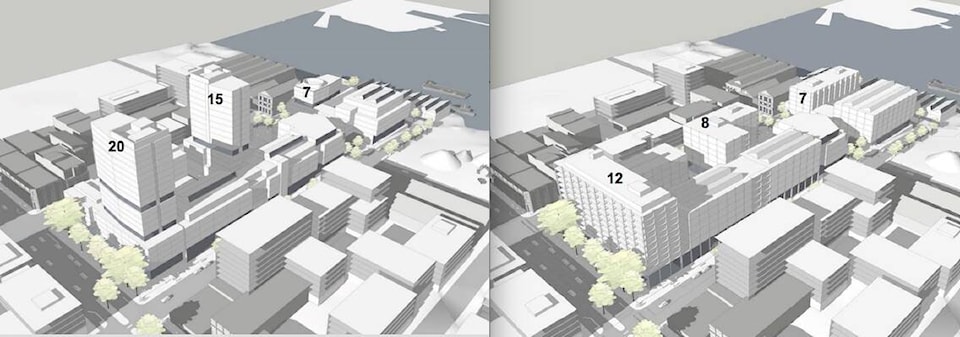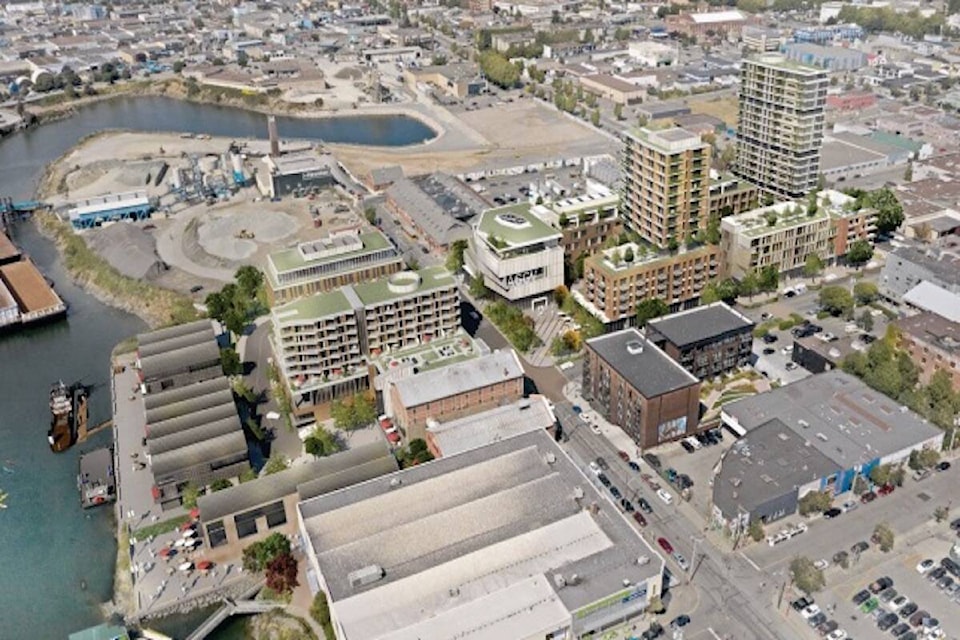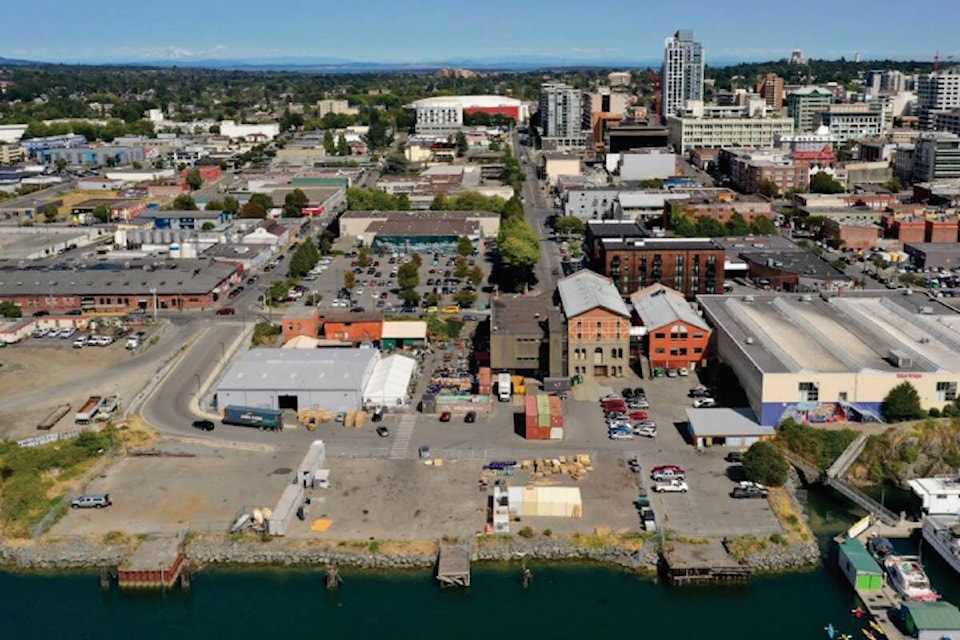The City of Victoria on Thursday (May 2) moved forward with proposed land use changes that will have big implications for how the north end of downtown transforms and whether the city can foster thriving industrial areas.
Council weighed a proposal that looks to rezone the two blocks running from Government Street to the waterfront, between Chatham and Discovery streets.
On Thursday, council had to consider opposing views for the site, with a developer envisioning a residential-focused, mixed-used design that would include multiple towers, while city staff favoured having shorter, block-like buildings that would better protect the potential for industrial uses in the north of downtown.
Council unanimously supported more of a middle ground that would only allow buildings up to 14 storeys on the block running between Store and Government streets – a move that would align with staff’s preferred design while also preserving housing opportunities by supplying the developer with its requested increase in density.
The proposal envelops an area currently dominated by a parking lot and a waterfront area that staff said is largely underused. It’s also falls within an area that the city eyes as its future Industry, Arts and Innovation District.
Reliance Properties’ proposal aimed to create almost 400 housing units between three residential buildings, which would range between seven and 20 storeys. The mixed-use project would also include some industrial and light-industrial work spaces.

Staff saw various upsides in the plan, saying it: advances cultural goals by providing a building along Store Street that could host a non-profit-run art gallery; develops underutilized land; creates needed housing; and provides public amenities like plazas, connections to the waterfront and new pedestrian corridors. The redevelopment will also retain three heritage buildings along Store Street that would be incorporated into the plans.
However, city officials were concerned the plan would also eat into and undermine the city’s little remaining industrial land at the north end of downtown – at a time when Victoria faces a shortage of spaces that can accommodate those uses. While more than 90 per cent of the city is designated for residential uses, under four per cent of the city is left for industrial purposes.
Miko Betanzo, a senior planner with the city, said feedback from residents and industrial operators on the proposal emphasized the need to make Victoria’s industrial sector visible and something to be proud of. He used Granville Island in Vancouver as an example of a place that mixes positive public spaces with heavy industry. It’s staff intention to spur marine industrial businesses at the waterfront site to take advantage of the city’s deep-sea harbour.
He also explained how the applicant’s proposal reflects a residential-focused project because towers are more economically efficient to build and they can fetch higher returns by offering housing with nice views. Low-rise buildings are more identifiable with industrial spaces, Betanzo said.

Several councillors noted many residents were urging them to get the proposal to a public hearing, which is needed as the plans require various amendments to the official community plan (OCP). Reliance will now have to bring a reconfigured proposal before council before a public hearing is set.
“I think all of us have struggled a little bit to understand the delicate balance that this is trying to thread between creating much-needed industrial land on the water, or in the city, creating employment lands, addressing our housing crisis, but also having a development that’s economically feasible to provide some really impressive amenities,” Coun. Matt Dell said.
The direction passed by council will also maintain the city’s ability to have a publicly accessible pathway along the harbour, regardless of whether the site hosts industrial buildings along the waterfront in the future. Several councillors spoke about the challenge in balancing what could be a working harbour with a public walkway.
Betanzo said there are many industrial uses that can be compatible with pedestrians and can create lively environments.
READ: Downtown Victoria site to begin approval process for arts and innovation district



